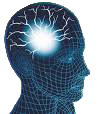An article came out from India a few weeks ago the findings of which are even more relevant in current lockdown as the use of home devises in Surrey & elsewhere has propably increased significantly;
Below is synopsis ( summary of article republished in Medscape )
Smartphone use in patients with primary headache is connected to more medication use and less pain relief, new research shows.
Investigators found 96% of patients with headache who used smartphones took pain relievers compared to 81% of their counterparts with headache who did not use smartphones.
Furthermore, smartphone users reported they received less pain relief from analgesics vs those who did not use smartphones — with 84% of smartphone users reporting moderate or complete relief of headache pain vs 94% of non-users.
“While these results need to be confirmed with larger and more rigorous studies, the findings are concerning, as smartphone use is growing rapidly and has been linked to a number of symptoms, with headache being the most common,” study author Deepti Vibha, MD, DM, MSc, additional professor of neurology, All India Institute of Medical Sciences, New Delhi, said in a press release.
To determine the association between smartphone use and worsening of headache, the investigators identified 400 patients aged ≥ 14 years with primary headache, which includes migraine, tension headache, and other headache types.
Participants were divided into two groups — non-smartphone users (NSUs) and smartphone users (SUs).
SUs were further subdivided, with those who scored 0 to 1 on the smartphone addiction questionnaire defined as “low SUs,” and those who scored ≥1 defined as “high SUs.”
The study’s primary objective was to investigate the association of mobile phone usage with new-onset headache, defined as a primary headache that became chronic or got significantly worse or increased severity of primary headache.
Migraine was the most common headache type in both groups, followed by chronic migraine/chronic tension-type headache.
The duration of headache symptoms, headache course, and number of monthly headache episodes, were similar between NSUs and SUs, but there were notable differences in headache characteristics between the two groups.
Age at headache onset was older in NSUs, compared with SUs. In addition, fewer NSUs than SUs reported aura.
There were also differences between NSUs and SUs in patterns of analgesic use and the amount of relief patients obtained from medication. NSUs took a lower median number of pills for acute treatment, compared with SUs.
A lower proportion of NSUs were taking analgesics for acute attacks and a higher proportion of NSUs had complete relief with acute medication, compared to SUs.
High vs low SUs showed similar patterns. High SUs had higher monthly pill counts for acute treatment, compared with low SUs. A smaller proportion of high SUs vs low SUs reported complete relief with acute medication.
“The use of [a] smartphone was associated with an increase in requirement of acute medication and less relief with acute medication,” the investigators conclude.
However, Vibha noted that the study was not powered to establish a mechanism for the association, but rather they wanted to determine “if there was an association at all.”
“Now that there is a direction, longitudinal studies may be able to look at putative and maybe unknown mechanisms,” he said.
Ways of mitigating the deleterious effects of smartphones is by limiting their use and using the hands-free feature that doesn’t affect neck position or cause strain during long conversations, Vibha added.
Mr katesmark comments ; Here at our headache & migraine clinic in Ewell, Epsom, clinicians already ask headache patients about habits regarding mobile devices use and this research shows why. It also gives sense of scale regarding the impact of excessive use.
Obviously the exact cause of the relationship between mobile use & headpain is not clear and could be the user’s neck position, the phone’s lighting, eyestrain, or the stress of being connected at all times. Most likely it is a combination of many factors.
Potentially helpful options might include features such as hands-free settings, voice activation, and audio functions that might to help smartphone users benefit from their phones without exacerbating their headaches. As well as examination & treatment if necessary to improve neck function.

